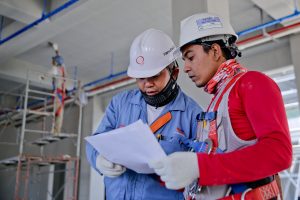8 things to know before buying a strata property

In case you’ve decided to buy a strata property, you need to realize it’s a special type of property where you have specific duties and fees to pay and where things work a bit differently than in other forms of households.
Informing yourself on the specific conditions is the pre-condition of a successful purchase.
1. What is a strata property?
A strata property is a building or even a group of them where all individuals own a small portion (a “lot”) each but they also own a part of the common property (for example, driveways, the garden, the foyer, etc.). The shared ownership is under the control of an owners’ corporation.
The strata title is an Australian innovation that is now being used around the world.
2. What exactly will you own?

You need to identify what exactly will be your lot and what the common property is. The only way to do it is to check the strata scheme. Sometimes you may own the floor coverings within your flat but not the stairwell or the external walls. You alone are responsible for maintaining your lot but the common property is maintained by the owners’ corporation.
The boundaries of the common property are usually formed by the upper surface of the floor, the under-surface of the ceiling and the external walls (with the doors and windows). By buying a strata property, you automatically become a member of the Owners’ corporation.
3. Who’s in charge?
The owners’ corporation is responsible for the strata scheme but they usually hire professionals like Eling Strata Management to take care of the scheme on a daily basis.
There may also be a strata committee that includes several owners elected annually on the general meeting. They make decisions that affect the owners’ corporation and they represent all the owners.
Under new Australian rules, anyone whose profession is connected to the strata scheme (a building manager or a rental agent) can’t be elected as a member of the strata committee unless they belong to the owners’ corporation.
4. Does the strata company have appropriate funds?
You don’t want to buy a lot only to find out later that major repairs will be needed, forcing you to pay a large special levy. If the strata company is well-managed, there will be a reserve fund. However, this isn’t something you will find out in a strata building inspection report.
5. Is a building maintenance plan in order?
There will be a building maintenance audit that has identified building defects and schedule maintenance if everything is well-managed. In case the management is poor, it could lead to the decreased value of the property and loss of a part of insurance coverage.
6. Is it possible to renovate?

It used to be quite difficult to even hammer a nail into a common property wall. Every type of work had to be by-law approved. However, the new regulations make the process a bit easier, classifying works into cosmetic, minor or major changes. Cosmetic changes only need to be notified to the committee, the second one needs just an approval through voting by the committee, while the last one requires a general meeting and a special resolution. In any case be sure to double-check is the renovation worth the trouble.
7. What are the ongoing costs?
Owning a strata property includes having to pay levies. Some levies may be larger than others, depending on the size of the lot and other “entitlements”. The required amount is determined at the general meeting of the committee.
Your levies go on to be distributed into two funds. The administrative fund is used for everyday expenses, for example, grounds maintenance, and garden maintenance. The second one is the sinking fund, used only for capital expenses and larger works (for instance, external painting of the building).
8. Is the property appropriately insured?
The owners’ corporation is required to obtain insurance for the building based on the latest valuation. The corporation also needs to obtain insurance for injury to voluntary workers and workers’ compensations, as well as against public liability.
The building may include light fittings, doors and windows, hot water systems, toilet bowls, cupboards, and other appliances.
It’s also a smart move to take out landlord insurance in case of potential losses and damage to the property made by tenants.
Final comment
Many people opt for buying a strata property because it’s cheaper and a great investment. However, it can be more complicated if you don’t do your homework.
In general, you have most of the rights as an owner of the traditional housing, but you are also a business partner of other co-owners in the building, which comes with additional duties.
















